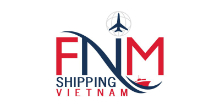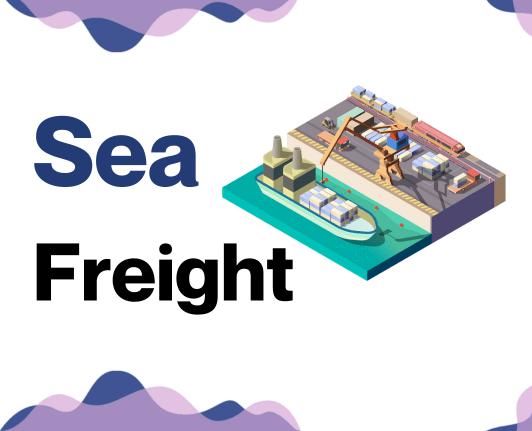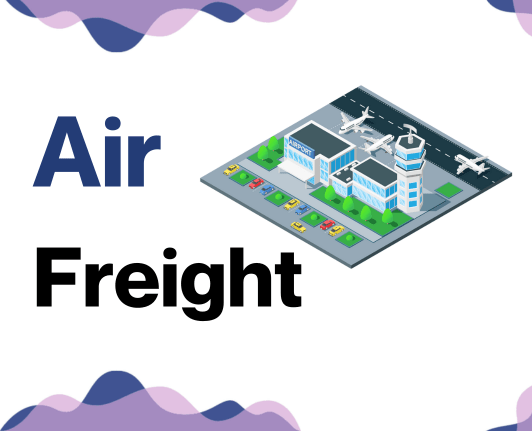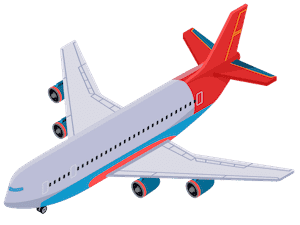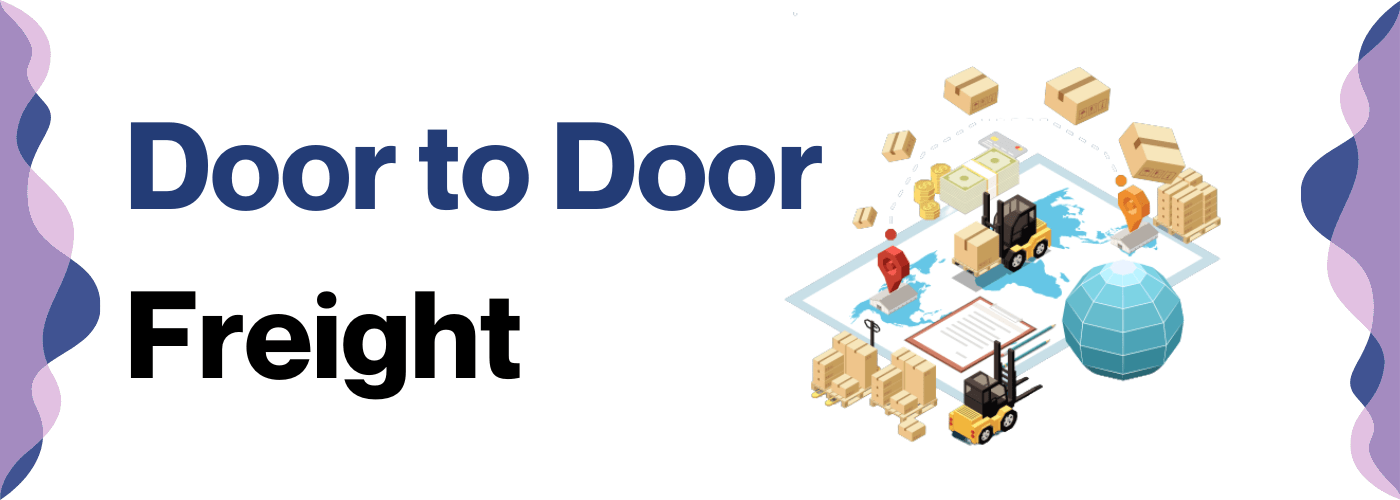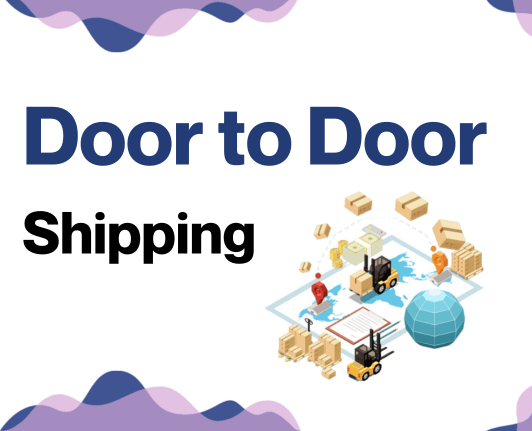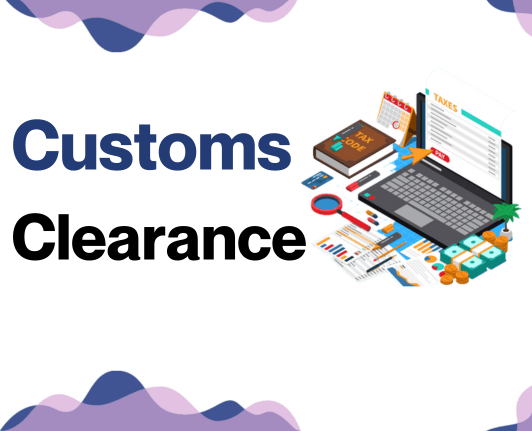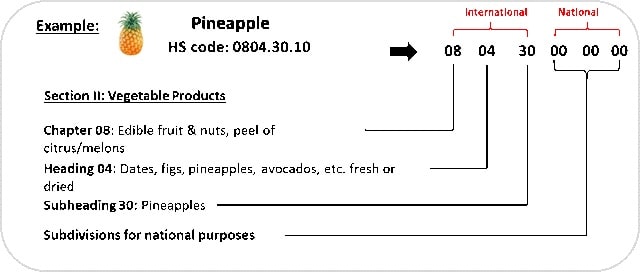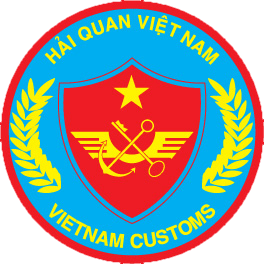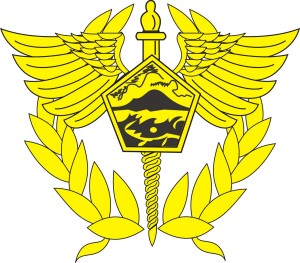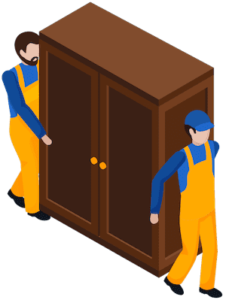Why is transporting goods between Vietnam and Indonesia more challenging than eating a bowl of spicy pho? Well, it comes down to correctly understanding rates, transit times, and the maze of customs regulations that vary from country to country. This guide is designed to provide you with comprehensive insights into freight options - be it air, sea, road, or rail - along with the nuances of customs clearance, duties, and taxes. You'll find practical, business-focused advice to streamline your shipping operations from Hanoi to Jakarta and beyond. If the process still feels overwhelming, let FNM Vietnam handle it for you! Our expertise as an international freight forwarder ensures every step of your shipping process converts potential challenges into booming successes.
Which are the different modes of transportation between Vietnam and Indonesia?
Choosing the right transportation method for shipping between Vietnam and Indonesia feels a lot like picking out the perfect car. You wouldn't buy a sports car if you're regularly hauling heavy cargo, right? Consider the shorter sea route, similar to a daily-use pickup. It's cost-effective and great for larger, heavier items. For smaller, time-sensitive cargo, think of it like a sports car: air transport is your quick, but pricey choice. Ignore road and rail - it's like expecting a boat to drive on a highway! Remember, matching your shipping needs with the practical options is key to a smooth delivery.
How can FNM Vietnam help?
Experience seamless shipping from Vietnam to Indonesia with FNM. We handle everything from documents and customs to transport logistics, making your job easier. For a stress-free freight forwarding journey, call our consultants or get a free quote in less than 24 hours. Let's move the world together.
FNM Vietnam Tip: Sea freight might be the best solution for you if:
- You're moving big loads or large items. Sea freight offers roomy, cost-effective solutions.
- Your shipment isn't time-critical. Ocean routes take longer but are often more reliable.
- Your supply chain links major ports, tapping into a broad network of sea lanes.
Sea freight between Vietnam and Indonesia
In the trade world, the sea route from Vietnam to Indonesia serves as a robust bridge between key industrial hearts, linking ports like Hai Phong and Ho Chi Minh City to Jakarta and Surabaya. Especially for bulky goods transport, ocean freight becomes the unsung hero of cost-effectiveness in spite of its sedate pace. However, it's not without its trials.
Plagued by stumbling blocks, many businesses grapple with the intricacies of shipping between these nations. It's like attempting to solve a Rubik's cube blindfolded. But there's hope - with the right best practices and specifications, the process becomes smoother.
Strap in as we take the steering wheel to guide you through this complex labyrinth of shipping. We'll untangle the knots, helping you avoid common pitfalls, and illuminate the course to streamline your sea freight between Vietnam and Indonesia. It isn't rocket science, as long as you've got your own personalized shipping compass - right here in this guide.
Main shipping ports in Vietnam
Port of Hai Phong
Location and Volume: Situated at the northern part of Red River Delta, Hai Phong is one of the two largest ports in Vietnam. It handles about 50 million tons of freight annually.
Key Trading Partners and Strategic Importance: China, South Korea, and Japan are some of the primary trading partners. This port is strategically crucial due to its proximity to the Beibu Gulf and South China Sea, providing access to crucial shipping lanes.
Context for Businesses: If your business has its roots in Asia, especially east and southeast Asia, Hai Phong will be central to your shipping strategy thanks to its key geographical position and robust handling capacity.
Port of Ho Chi Minh City
Location and Volume: Located on the Saigon River, this port is the biggest in Vietnam in terms of TEUs, handling about 6 million TEUs annually.
Key Trading Partners and Strategic Importance: Singapore, Hong Kong, and the United States are the significant trading partners of this port. It is strategically important due to its urban location and access to both domestic and international shipping routes.
Context for Businesses: If you aim to tap into global and domestic Vietnamese markets, the Port of Ho Chi Minh City could be your vital logistics hub due to its large volume handling and extensive connectivity.
Port of Da Nang
Location and Volume: Da Nang, located on the eastern sea, is the third largest port in Vietnam, handling roughly 8 million tons of cargo annually.
Key Trading Partners and Strategic Importance: The major trading partners are Japan, Russia, and Australia. It serves as a significant transit port for Central and Western Vietnam.
Context for Businesses: If your business needs better access to central and western Vietnamese markets, Da Nang Port, with its strategic transit position and ample facilities, should be top of your list.
Port of Qui Nhon
Location and Volume: Located in the provincial city of Binh Dinh, the Qui Nhon port moves approximately 8.6 million tons of goods per year.
Key Trading Partners and Strategic Importance: The port mainly serves countries in the ASEAN region, including the Philippines, Thailand, and Singapore. Its strategic importance lies in serving the vast agricultural and manufacturing bases in the region.
Context for Businesses: If your business deals with Southeast Asian markets, Qui Nhon could be a cornerstone of your shipping plan, as it provides excellent access to dense production and consumption areas in the ASEAN region.
Vung Tau Port
Location and Volume: Positioned on the southern tip of Vietnam, Vung Tau handles over 38 million tons of shipping volume annually.
Key Trading Partners and Strategic Importance: It primarily serves the US, Japan, and other ASEAN countries. This port is vital due to its position on international maritime routes and its extensive container handling abilities.
Context for Businesses: If your business requires regular and high volume shipments through Southern Asia, the Vung Tau Port could prove invaluable in your shipping operations given its location and high-level services.
Can Tho Port
Location and Volume: Can Tho, nestled in the heart of the Mekong Delta, is the crucial port for southwestern Vietnam, handling about 17 million tons of goods annually.
Key Trading Partners and Strategic Importance: The main trading partners are China, Japan, and South Korea. Can Tho's strategic importance rests on its exciting role as a major agricultural and fishing hub.
Context for Businesses: If your logistics strategy involves agriculture or light industry, the Can Tho Port could be your ideal logistics link due to its direct access to a massive agricultural breadbasket and its comprehensive services.
Main shipping ports in Indonesia
Port of Belawan
Location and Volume: Located in Sumatra, the Port of Belawan is an important transit point for goods transported across the Malacca Strait. The port handles a shipping volume of nearly 2,000,000 TEU annually.
Key Trading Partners and Strategic Importance: The port's primary trading partners include Malaysia, Singapore, and Thailand. This port is the main gateway for Indonesia's palm oil exports.
Context for Businesses: If you're looking to establish a foothold in Indonesia's booming palm oil industry, the Port of Belawan might be key to your logistics strategy, given its strategic location and high-volume handling capabilities.
Port of Tanjung Priok
Location and Volume: The Port of Tanjung Priok is in Jakarta and is by far the busiest and most advanced Indonesian port, with a shipping volume of over 6,500,000 TEU.
Key Trading Partners and Strategic Importance: With Thailand, Malaysia, and China as its main trading partners, the port services a multitude of industries. It is a critical part of the Jakarta's transport infrastructure and plays a vital role in promoting domestic and international trade.
Context for Businesses: If you're targeting the massive Jakarta market or even the wider Indonesian market, then the Port of Tanjung Priok should be a priority in your shipment plans, given its heavy shipping volume and advanced facilities.
Port of Surabaya
Location and Volume: Based in East Java, the Port of Surabaya, also known as Tanjung Perak, serves primarily domestic routes but also handles international trade. The shipping volume here is around 3,250,000 TEU.
Key Trading Partners and Strategic Importance: Key trading partners include Australia, Malaysia, and Singapore. The port is instrumental to East Java's economy due to its connectivity with eastern parts of Indonesia.
Context for Businesses: Shipping through the Port of Surabaya could be beneficial for those looking to tap into East Java or the eastern Indonesia market, offering extensive domestic connectivity and solid infrastructure.
Port of Makassar
Location and Volume: Located in South Sulawesi, the Port of Makassar handles approximately 1,500,000 TEU every year.
Key Trading Partners and Strategic Importance: The port enjoys a bustling trade relation with neighboring countries like the Philippines, Australia, and Singapore. Its strategic importance emanates from its proximity to these Southeast Asian markets.
Context for Businesses: Should you be eyeing on the markets in the Philippines or Australia, the Port of Makassar could be a critical part of your import/export logistics due to its unique geographic location.
Port of Bitung
Location and Volume: Based in North Sulawesi, the Port of Bitung has an annual capacity estimated to be around 1,000,000 TEU.
Key Trading Partners and Strategic Importance: The main trading partners are Philippines, Japan, China, and South Korea. As a significant player in the shipping world, it is currently being developed into an international hub port.
Context for Businesses: If you're looking to branch out to North Sulawesi or even countries like the Philippines and Japan, including the Port of Bitung in your logistics plan might be pivotal, given its international connectivity and strategic developments.
Port of Soekarno-Hatta
Location and Volume: Located in Lampung province on the southern tip of Sumatra, Port Soekarno-Hatta handles nearly 1,500,000 TEU annually.
Key Trading Partners and Strategic Importance: The port’s key trading partners are Malaysia, India, and China. It holds a strategic location near the Sunda Strait, acting as a gateway to Sumatra for international liners.
Context for Businesses: For businesses considering markets in Sumatra or liaising with important trade partners in Malaysia, India, or China, Port Soekarno-Hatta could be an essential logistics solution, owing to its significant trade connectivity and strategic location.
Should I choose FCL or LCL when shipping between Vietnam and Indonesia?
Stumped on whether to ship via full container load (FCL) or less than container load (LCL), commonly known as consolidation, from Vietnam to Indonesia? Your choice might seem minor, but it can significantly impact your cost, delivery time, andcargo safety. Indeed, picking the method best tailored to your needs is a strategic decision. This section illuminates these sea freight options' pros, cons, and key comparatives, preparing you to nail this crucial choice. Read on to ship smarter, ensuring your business sails smoothly ahead.
LCL: Less than Container Load
Definition: Less than Container Load (LCL) shipment involves consolidating your freight with other shippers' goods in one container. Unlike Full Container Load (FCL) where you rent the whole container, LCL allows you to pay only for the space your freight occupies.
When to Use: Opt for LCL shipping between Vietnam and Indonesia when your cargo is less than 13/14/15 CBM. This offers flexibility for low-volume consignments because it does not require you to fill up an entire container.
Example: Consider a Vietnamese handicrafts manufacturer shipping five CBM of products to Indonesia. Filling a whole 20-foot container might be excessive and expensive, so they opt for LCL shipment, paying only for the 5 CBM occupied.
Cost Implications: With LCL, costs are proportional to the size of your shipment, making it a cost-effective solution for smaller shipments. Notwithstanding, it’s crucial to consider potential costs such as deconsolidation fees at the destination port. Remember, every LCL freight has a base rate, but the final price can fluctuate due to factors like destination charges and customs duties.
FCL: Full Container Load
FCL, which stands for Full Container Load, in FCL shipping, means your goods fill an entire container, either 20'ft or 40'ft. This method of shipping is cost-effective for high-volume loads and offers enhanced security as the container remains sealed from the moment it leaves your warehouse until it reaches its destination.
You should consider FCL shipping when your cargo is more than 13/14/15 cubic meters (CBM). To put it into perspective, if you're in the furniture industry exporting large amounts of furniture from Ho Chi Minh City to Jakarta, choosing an FCL container will get you the biggest bang for your buck, especially if your FCL shipping quote fits well within your budget.
Cost implications include the fact that fixed costs such as the handling and clearance fees are spread over a larger volume of goods, reducing the cost per unit. So, while the overall FCL shipping quote may seem high initially, the efficiency, safety, and cost-effectiveness it offers make it a compelling choice for substantial cargo volumes.
Say goodbye to shipping headaches!
Frustrated with international shipping? FNM Vietnam is here to transform the process into a breeze for your business. Our ocean freight specialists navigate tricky decisions for you, considering vital factors such as shipment size, cost-effectiveness, and speed, when determining if consolidation or a full container is the answer. Trust us with your Vietnam-Indonesia freight needs. Click for a free shipping estimation and let our experts simplify your shipping journey today.
How long does sea freight take between Vietnam and Indonesia?
Sea freight between Vietnam and Indonesia typically spans a few days but this can vary. Several factors play into these transit times, including the specific ports utilized, the weight of the shipment, and the nature of the goods being transported. To get a more accurate and tailored quote, firms like FNM Vietnam are a great touchpoint.
| Vietnam Ports | Indonesia Ports | Average Transit Time (Days) |
| Port of Hai Phong | Port of Tanjung Priok | 10-12 |
| Port of Da Nang | Port of Tanjung Perak | 17 |
| Port of Quy Nhon | Port of Belawan | 11 |
| Port of Ho Chi Minh City | Port of Makassar | 15 |
*These are approximate transit times and actual durations can vary based on several factors extolled earlier. Always reach out to your freight forwarder for precise logistics information.
How much does it cost to ship a container between Vietnam and Indonesia?
Calculating ocean freight rates between Vietnam and Indonesia isn't as easy as plugging in numbers; it's a dynamic process influenced by several elements. These factors include Points of Loading and Destination, the carrier, nature of goods, and fluctuations in monthly market rates. Hence, quoting a precise shipping cost is challenging. However, the cost may roughly range from $64 at the lower end to $85 on the higher side per Cubic Meter (CBM). Not to worry though, our shipping specialists are on hand to help! We evaluate each shipment individually and endeavor to provide tailored, optimal rates that best fit your unique needs.
Special transportation services
Out of Gauge (OOG) Container
Definition: Out of Gauge (OOG) containers are specialised containers designed to handle large, oversized cargo that doesn't fit into standard dimensions, hence the term 'Out of gauge cargo'.
Suitable for: Equipment, machinery, or any oversized goods that demand extra space and security while in transit.
Examples: Construction machinery, windmill blades, or antennas can effectively use this method since they usually exceed standard container dimensions.
Why it might be the best choice for you: Businesses with unusually large items will find OOG containers useful, as these containers offer the flexibility to accommodate goods that don't conform to typical sizes.
Break Bulk
Definition: Break bulk involves handling load individually, unit by unit, not in containers. This method is typically used when the cargo size or shape is not appropriate for containerized shipping.
Suitable for: Large construction equipment, turbines, generators, or any other type of heavy, oversized, or project cargo.
Examples: Industries like oil & gas and energy sectors can benefit by transporting essential components, such as valves, for large-scale projects.
Why it might be the best choice for you: If your business handles large items that cannot be dismantled and need to be transported as a whole, break bulk could be your best shipping option.
Dry Bulk
Definition: Dry bulk shipping involves the transportation of homogeneous, loose cargo load such as metal ores or grains in large quantities.
Suitable for: Companies dealing in commodities such as coal, grain, or mineral ore.
Examples: Industries like agriculture and mining, dealing in granular goods and raw materials, often avail of dry bulk shipping.
Why it might be the best choice for you: For businesses dealing with loose, granular products and need to ship in bulk, dry bulk shipping is the economical choice due to its lower packaging costs.
Roll-on/Roll-off (Ro-Ro)
Definition: In Roll-on/Roll-off (Ro-Ro) shipping, wheeled cargo such as cars, trucks, trailers, or any other machinery that can roll, are driven on and off the Ro-Ro vessel.
Suitable for: Automotive industries or businesses involved in trading heavy mobile machinery.
Examples: Companies dealing in vehicles, agricultural machinery, and road construction equipment typically use Ro-Ro shipping.
Why it might be the best choice for you: If you are involved in the production or trade of vehicles or machinery, Ro-Ro shipping is efficient and easily navigable.
Reefer Containers
Definition: Reefer containers are refrigerated containers used for transporting temperature-sensitive goods using consistent thermal control during transit.
Suitable for: Businesses dealing in perishable items, food products, pharmaceuticals, etc.
Examples: Fresh fruits, flowers, seafood, or temperature-sensitive medical goods are transported using this method.
Why it might be the best choice for you: If your business requires stringent temperature control for your goods during transportation, reefer containers can provide the necessary environment to maintain the quality of your goods.
Engage with FNM Vietnam for a customized logistics solution. Harness our prowess in guiding businesses successfully through their international shipping endeavors. For a free shipping quote within the next 24 hours, do not hesitate to contact us.
FNM Vietnam Tip: Air freight might be the best solution for you if:
- You're on a tight schedule. Air freight delivers speed unmatched by other modes.
- Your cargo is under 2 CBM, a good fit for air's smaller capacity.
- Your destination is off the usual routes, making air's global network a key asset.
Air freight between Vietnam and Indonesia
Speed, reliability, and capacity to handle small but valuable shipments - welcome to the realm of air freight between Vietnam and Indonesia! Imagine delicacies like bird's nests, a valued commodity in Indonesian cuisine, making a swift, temperate-controlled journey by air. Or Vietnam's famous silk and lacquerware, reaching Jakarta's high-end markets within hours, secure and damage-free.
However, this speedy magic carpet has its quirks. Think you're paying too much for your stylish silk jackets' airfare? Many businesses stumble here, not factoring in the 'volumetric weight' correctly - hitting them with unexpected charges. Maybe you've wondered why your bird's nests cost more to ship than you expected? Well, airline carriers use a special formula for calculating charges, weighing not just the actual weight but the space your product occupies on their plane. More on these errors and best practices to avoid them in the upcoming sections, so stay tuned!
Air Cargo vs Express Air Freight: How should I ship?
Are you wondering how to get your goods swiftly across borders from Vietnam to Indonesia? Unravel whether to hop on the commercial airline route for air cargo or faster express freight using dedicated planes. Consider this, air cargo uses regular, shared airlines - like catching a public bus, and express air freight is more like hailing your own taxi, flying your goods on dedicated freighters. We're diving into the nitty-gritty in this guide to help your business make the right decision.
Should I choose Air Cargo between Vietnam and Indonesia?
Considering air cargo for your Vietnam-Indonesia shipments? Renowned for its cost-effectiveness and reliability, air cargo becomes an ideal choice, particularly for cargoes over 100/150 kg (220/330 lbs). Airlines like Vietnam Airlines and Garuda Indonesia, play vital roles in facilitating this. Bear in mind, transit times can be longer due to fixed schedules. So, if budgetary needs align, air cargo offers a credible, potentially more favorable, option.
Should I choose Express Air Freight between Vietnam and Indonesia?
Express air freight is a specialized service for speedy, global shipments, typically smaller than 1 CBM or 100/150 kg (220/330 lbs). Operated by global powerhouses like FedEx, UPS, and DHL, express air freight ensures your cargo is given priority. No passengers on these dedicated cargo planes mean fewer weight restrictions and faster transit times. So, if you're looking to ship small, time-sensitive goods from Vietnam to Indonesia, opting for express air freight might be the best choice. Get your merchandise moving smoothly, quickly, and with lesser customs trouble.
Main international airports in Vietnam
Tan Son Nhat International Airport
Cargo Volume: Handles over 400,000 tons of cargo annually.
Key Trading Partners: China, Japan, South Korea, and USA.
Strategic Importance: Located in Ho Chi Minh City, it serves as a crucial link to the Southern economic hub of Vietnam.
Notable Features: It hosts the Tan Son Nhat Cargo Services, a modern cargo terminal with facilities for handling cargo shipments and cold storage.
For Your Business: If your business heavily deals with southern parts of Vietnam, utilizing this airport could provide fast and efficient freight forwarding.
Noi Bai International Airport
Cargo Volume: Annually processes around 600,000 tons of cargo.
Key Trading Partners: China, South Korea, Japan, Taiwan, and USA.
Strategic Importance: Noi Bai, situated in Hanoi, is an essential transport hub connecting Northern Vietnam to major Asian, European, and North American markets.
Notable Features: It boasts dedicated cargo terminal infrastructure, ensuring your freight is handled to the highest standards.
For Your Business: If you frequently ship to or from Northern Vietnam, Noi Bai could be an efficient portal for your supply chain.
Da Nang International Airport
Cargo Volume: Handles above 100,000 tons of cargo per year.
Key Trading Partners: China, Japan, South Korea, and Singapore.
Strategic Importance: Located in Da Nang, it provides the central region of Vietnam with access to international freight transportation.
Notable Features: It's equipped with the necessary facilities to handle a wide range of cargo types, making it versatile for different shipping needs.
For Your Business: If your supply chain extends into Central Vietnam, including Da Nang to your shipping strategy could streamline your operations in the region.
Cần Thơ International Airport
Cargo Volume: Manages close to 50,000 tons of cargo annually.
Key Trading Partners: Mostly caters to Southeast Asia markets including Thailand and Malaysia.
Strategic Importance: Can Thơ, located in the Mekong Delta region, serves as a vital bridge for exporting agricultural products to international markets.
Notable Features: Offers special handling services for perishable goods – perfect for agricultural exports.
For Your Business: If your company deals with agricultural exports or imports, Can Thơ's specialized services could greatly enhance your capabilities.
Cà Mau Airport
Cargo Volume: Primarily a passenger airport, but also manages light cargo shipments.
Key Trading Partners: Primarily serves domestic markets, but also links to Asian markets.
Strategic Importance: Positioned in the southernmost province of Vietnam, Cà Mau provides a unique gateway for reaching remote areas.
Notable Features: Known for its capability to handle light cargo, suited for businesses with less bulky freight needs.
For Your Business: If your enterprise operates in remote areas of the Mekong Delta, integrating Cà Mau into your shipping strategy may optimize your supply chain in these areas.
Main international airports in Indonesia
Sultan Hasanuddin International Airport
Cargo Volume: Sultan Hasanuddin is one of the busiest cargo airports in Indonesia, handling over tens of thousands of tons of goods annually.
Key Trading Partners: The airport is an important hub for trade with other Indonesian provinces, Australia, Malaysia, and East Asian countries such as China and Japan.
Strategic Importance: Located in Makassar, South Sulawesi, the airport is strategically positioned to facilitate trade within Indonesia's archipelago and international trade within the Asia Pacific region.
Notable Features: The airport houses modern cargo terminals with comprehensive logistics facilities capable of handling perishable goods, pharmaceutical products, and more.
For Your Business: If your business trades heavily within the Asia Pacific and requires quick and efficient cargo handling, Sultan Hasanuddin might be the ideal gateway for your needs.
Soekarno Hatta International Airport
Cargo Volume: It's Indonesia's largest and busiest airport, handling millions of tons of cargo annually.
Key Trading Partners: Key trading partners predominantly include Singapore, South Korea, Japan, highlighted by its extensive connections to many global airports.
Strategic Importance: Situated near the capital city, Jakarta, it serves as a major gateway to Indonesia and has a significant influence over the country's economy.
Notable Features: It features an integrated cargo village designed to expedite cargo handling and increase storage capacities.
For Your Business: Soekarno Hatta is ideal for businesses shipping with diverse trade partners across continents, as its extensive connectivity offers flexibility and supports robust shipping strategies.
Juanda International Airport
Cargo Volume: Juanda airport handles hundreds of thousands of tons of goods annually.
Key Trading Partners: Countries like Japan, Singapore, and South Korea are dominant trade partners, besides domestic traffic.
Strategic Importance: Being close to the industrial and urban area of Surabaya, East Java, it serves as a crucial link for businesses involved in regional and international trade.
Notable Features: The airport boasts efficient cargo handling services and a freight-forwarding facility facilitating transport to the hinterland.
For Your Business: If your business deals with heavy industrial goods or operates extensively in the Java region, Juanda can provide accessible transport and efficient cargo services.
Kualanamu International Airport
Cargo Volume: This airport handles thousands of tons of cargo per annum.
Key Trading Partners: The airport maintains a significant trade relationship with countries such as Malaysia, Singapore, and Thailand.
Strategic Importance: Located in North Sumatra, it's a pivotal hub for the movement of goods to and from the western part of Indonesia.
Notable Features: The cargo terminal is equipped to handle a wide variety of goods, including perishable items, live animals, hazardous substances, and more.
For Your Business: Kualanamu could be a key operational hub if your business takes part in the regional trade of unique commodities requiring specialized cargo handling.
Husein Sastranegara International Airport
Cargo Volume: The airport handles thousands of tons of goods annually.
Key Trading Partners: Dominant trade partners include Singapore, Malaysia, and the Netherlands with considerable domestic traffic.
Strategic Importance: Situated in Bandung, West Java, it serves an essential role in connecting Java's flourishing industries to international markets.
Notable Features: The cargo terminal provides facilities for goods requiring special handling including textiles, machinery, and electronics.
For Your Business: If your business operates in textile-intensive industries or requires access to West Java's industrial sectors, Husein Sastranegara offers an efficient gateway into international trade.
How long does air freight take between Vietnam and Indonesia?
On average, air freight shipping between Vietnam and Indonesia takes between 1-3 days. However, these transit times can fluctuate depending on the specific airports involved, the weight of the cargo, and the nature of the goods being shipped. For the most accurate and precise times, it's best to consult with an experienced freight forwarder, such as FNM Vietnam.
How much does it cost to ship a parcel between Vietnam and Indonesia with air freight?
Shipping air freight between Vietnam and Indonesia typically costs between $2.50 and $10 per kilogram. However, providing an accurate estimate without knowing specifics such as distance from the airport, dimensions, weight, and the nature of goods is challenging. Fortunately, our expert team always offers tailored quotes considering all these variables to ensure the best rates for you. We understand the nuances of this process and pledge to work closely with you to navigate it efficiently. Need a quote? Contact us and receive a free quote in under 24 hours.
What is the difference between volumetric and gross weight?
The gross weight of a shipment refers to the actual weight of the item, including any packaging or pallets. It's measured simply by putting the item on a scale and it's expressed in kilograms (kg). On the other hand, the volumetric or dimensional weight is a calculation that reflects the density of a package. It's a theoretical weight that is calculated from the length, width, and height of a package.
Calculating the gross weight is straightforward: put the package on a scale and read the weight. Let's imagine you have a box that weighs 120 kg (265 lbs). That's your gross weight.
Volumetric weight, however, involves an equation. For Air Cargo, the formula is (Length x Width x Height) / 6000. In Express Air Freight services, the formula is (LxWxH) / 5000, where the dimensions are in centimeters. For example, a package with dimensions of 50cm x 60cm x 30cm would have a volumetric weight of 15 kg (33 lbs) for Air Cargo and 18 kg (40 lbs) for Express Air Freight.
These calculations matter because freight charges are based on whichever is higher between gross and volumetric weight. This system ensures carriers are compensated for space, not just weight, and it encourages shippers to use space efficiently.
FNM Vietnam Tip: Door to Door might be the best solution for you if:
- You seek hassle-free shipping. Door-to-door manages the entire process for you.
- You like one go-to contact. A dedicated agent oversees your door-to-door shipment.
- You aim to limit cargo handling. Fewer transitions mean less risk of damage or loss.
Door to door between Vietnam and Indonesia
Navigating the world of international logistics can be tricky, but Door to Door shipping simplifies it all. It's a hassle-free solution from Vietnam to Indonesia, bundling shipping, customs clearance, and delivery within one service. No more juggling multiple contacts - here's one streamlined process with benefits aplenty. Now, enough talk, let's dive into the nitty-gritty of Door to Door shipping in this unique corridor.
Overview – Door to Door
Shipping goods between Vietnam and Indonesia? Dealing with multiple touchpoints can be a headache. Don't fret! Our most sought-after service, Door to Door shipping, offers a seamless, stress-free solution. While it might cost a bit more, the extra expense eliminates the complexities of managing different segments of the shipping process. Let us shoulder responsibility, dealing with transport, customs, and documentation. We've got you covered, so you can focus on growing your business. Keep in mind, delivery times may vary depending on various factors, but rest assured, we're committed to providing the most efficient service. A box ticks option for many, Door to Door shipping alleviates many potential concerns. Dive in and discover more!
Why should I use a Door to Door service between Vietnam and Indonesia?
Ever dreamed of shipping goods from Vietnam to Indonesia as smooth as Vietnamese pho soup? Door to Door services might just be the secret ingredient you need! Here's why:
1. Stress-Free Shipping: We handle all the parts of the logistics process, so you can focus on your business instead. From pick-up in Vietnam to delivery in Indonesia, our expert team takes care of everything in-between.
2. Promises Delivered On Time: With express options and strict delivery timelines, Door to Door service ensures your urgent shipments reach their destination right when you need them. Now, there's a tick-tock you can believe in!
3. Care for Your Complex Cargo: Does your freight require special handling or have unique needs? No worries! Door to Door services offer specialized care to ensure even the most complex cargo is handled perfectly and arrives safely.
4. Convenient As Can Be: Imagine not having to worry about coordinating between multiple shipping companies just to get your cargo across the seas. That's Door To Door service for you — we'll handle the trucking straight to the final destination, providing you ultimate convenience.
5. A Proactive Problem Solver: Stuck in paperwork or customs? Not on our watch! We handle all customs clearance and administrative procedures, so your shipment progresses smoothly and quickly.
Simply put, a Door to Door service between Vietnam and Indonesia lets you enjoy a worry-free, efficient and convenient logistics experience. It's like having your favourite cup of Indonesian coffee served right at your doorstep!
FNM Vietnam – Door to Door specialist between Vietnam and Indonesia
Experience seamless door-to-door shipping between Vietnam and Indonesia with FNM Vietnam's complete freight forwarding service. Leave behind the complexity of cross-border logistics, as we take care of everything - right from packing your goods, handling transportation in all its forms, to managing customs clearance. Our skilled team, backed by a dedicated Account Executive, ensures a stress-free shipping experience. We're just a phone call away! Ask for a free and comprehensive cost estimate within 24 hours or speak to one of our expert consultants at no extra charge. Partner with FNM Vietnam, where we transform logistics into simplicity.
Customs clearance in Indonesia for goods imported from Vietnam
Customs clearance, the intricate process of passing goods through customs, holds its own unique challenges when importing goods from Vietnam to Indonesia. Navigating the system can spring unexpected fees and charges - a misstep that could stall your shipment. It's paramount to understand the maze of customs duties, taxes, quotas, and licenses - the lifeline of clearance. Ignorance could mean your goods languish in customs purgatory. Fortunately, we'll journey through these thorny fields in the coming sections. Moreover, FNM Vietnam stands ready to buoy you through the process. Armed with the origin, value, and HS code of your goods, our team is committed to smoothing your journey. We're just a call away from helping plan your next project's budget. So, dive in, and let's ensure successful clearance is on your horizon.
How to calculate duties & taxes when importing from Vietnam to Indonesia?
Stepping into the world of importing goods from Vietnam to Indonesia presents its unique set of challenges, and one integral part of this journey comes down to understanding how to estimate duties and taxes. The calculation rests on details including the country of origin - where your goods have been manufactured or produced, the Harmonized System (HS) Code specific to your product, the Customs Value (which primarily consists of the cost, insurance and freight (CIF) value), the applicable tariff rate, as well as any additional fees and taxes that may pertain to your merchandise. Kicking off this process involves your first step: pinpointing the country where your goods originated from. This preliminary move sets the stage for the intricate procedure of estimating duties and taxes in your cross-border shipment, enabling your business to plan effectively and avoid any unexpected surprises.
Step 1 - Identify the Country of Origin
Knowing your goods' country of origin is key - a starting point in estimating duties and taxes for shipping from Vietnam to Indonesia. Here's why:
1) Trade Agreements: Recognize the ASEAN Trade in Goods Agreement (ATIGA)? It safeguards mutual reductions in customs duties, and Vietnam and Indonesia, both being ATIGA members, benefit greatly.
2) Efficient classification: A product's origin paves the way to accurate HS code collection, ensuring proper classification.
3) Import restrictions: Some goods are restricted or prohibited due to origin. Double-check Vietnam's requirements to avoid predicaments.
4) Duty rates: Different origins attract varied duty rates. You'd prefer an optimal rate, wouldn't you?
5) Legal standard: Trade laws require clear documentation of goods' origin, so it's a must.
Do thorough homework before trading between these nations. Take advantage of the benefits from the existing trade protocols, and you'll find that your shipping process goes more smoothly than you'd think. Remember, informed decisions can save you an unexpected headache. Shipping from Vietnam to Indonesia? You've got this!
Step 2 - Find the HS Code of your product
Unsure about what a Harmonized System (HS) Code is and how to find it? No worries, you're at the right place. An HS Code, or Harmonized System Code, is a standardized multi-purpose system for classifying products used in international trade. It's a universal economic language used by more than 200 countries and economies around the world.
HS Codes have two main purposes; they make it possible for customs authorities to accurately identify and control goods from import/export, and they aid in calculating customs duties. It’s an essential identifier for businesses involved in international trade because it directly affects the import duties and regulations that your items will be subject to.
An astoundingly simple advice to find your HS Code is to ask your supplier. They have an excellent command of what they import and the corresponding regulations. However, if that door closes, we've got the window wide open for you.
For straightforward guidance, you can use the “Harmonized Tariff Schedule” tool. The steps are simple: just type in the name of your product in the search bar. Then, gaze down the Heading/Subheading column and voila! Your HS code will wink back at you!
Even experienced companies need guidance sometimes. Therefore, accuracy is your compass here! Completeness and precision when choosing the HS Code are crucial. A misplaced or erroneous code can lead to undesirable delays and, even worse, potential fines. Don’t let a few errant digits slow you down.
To help enhance your understanding, we've prepared an insightful infographic illustrating how to read an HS code.
Just like identifying the right road for your journey, locating the correct HS Code will ensure the smooth transportation of your goods. Always triple-check before you make a decision – clarity awaits those who verify!
Step 3 - Calculate the Customs Value
Understanding the Customs Value, especially when importing goods from Vietnam to Indonesia, can often feel like an uphill battle. To clarify, think of the Customs Value not as the mere product value, but rather as the more comprehensive CIF (Cost, Insurance, and Freight) value.
Let's demystify this further. Imagine you're importing furniture from Vietnam. Your product value for 20 teak tables is $2,000. The freight cost is $500 and insurance for your shipment comes to $50. The CIF value becomes $2,550. This CIF value, not the bare product price, is your Customs Value. Keep in mind that this is used to calculate your customs duties, so it directly impacts your bottom line! A clear understanding of this CIF-based Customs Value can really help your business efficiently manage shipping costs and customs duties.
Step 4 - Figure out the applicable Import Tariff
An import tariff is a tax imposed by the importing country on the goods brought in from abroad. It's crucial to note that Indonesia, when importing goods from Vietnam, primarily follows the Most Favored Nation (MFN) tariff rate. In this method, the same tariff rate is applied to all countries, except when there are specific agreements in effect that reduce tariffs for certain goods from certain countries.
To identify the applicable tariff rate for your goods in Indonesia, you'll need your product's Harmonized System (HS) code that you would have identified in an earlier step. You can check the tariff rates given by the Directorate General of Customs and Excise of the Republic of Indonesia.
Here's how to do it:
1. Visit the Directorate General of Customs and Excise's website.
2. Enter the HS code and the country of origin into the search.
3. The website will then display the tariffs for that particular product.
As an example, suppose you're importing ceramic dinner plates from Vietnam with an HS code of 6911.10. The website might show the tariff for such a product as 5%. If the Cost, Insurance, and Freight (CIF) price of your plates is $20,000, you'd calculate the import duties as follows: 5% of $20,000 equals $1,000. This means you would be paying $1,000 in import duties to bring your ceramic plates into Indonesia.
Noting these variables will provide a comprehensive view of the various costs involved in your import process, enabling more accurate budgeting and overall smoother transactions.
Step 5 - Consider other Import Duties and Taxes
Diving into the nitty-gritty of customs clearance, you'll often find a maze of additional import duties and taxes above and beyond the standard tariff rate. These can vary greatly based on both your product's nature and its country of origin.
Take excise duty, for instance. This tax is applied on goods like tobacco, alcoholic drinks, or luxury cars imported from Vietnam, and could drastically affect your importing cost. Similarly, anti-dumping taxes are in place to protect domestic industries. If the same product is sold cheaper in Vietnam than Indonesia, anti-dumping duties might be imposed to level the playing field.
Then there's the Value Added Tax (VAT). This is a tax on the consumption of goods and services within a country. In Indonesia, for example, if you're importing leather bags worth $10,000 from Vietnam, and the VAT rate is 10%, you're likely to pay $1,000 in VAT alone.
Remember, these are illustrative examples and actual rates and charges may vary. It's important to check the latest regulations and taxes to avoid any surprises. Understanding these charges helps you manage your budget and resources more effectively. It's not merely about making a successful shipment. The real success lies in managing your costs and mitigating risks.
Step 6 - Calculate the Customs Duties
Calculating customs duties can be a confusing task. The basic formula used by Indonesian customs is: Customs Duty = Customs Value of Goods (FOB value) Duty %. This means, if you're importing goods worth $1000 from Vietnam with a duty rate of 10%, your customs duty amounts to $100.
In the case of mandatory VAT or Pajak Pertambahan Nilai (PPN), you add this on top of customs value plus customs duty. At a typical 10% rate, if your goods plus customs duty totals $1100, you'd pay an additional $110 in VAT.
A more complex scenario includes Anti-Dumping Duty and Excise Duty. Let's say the custom value is $1000 with customary duty 10%, VAT 10%, anti-dumping tax 20%, and excise duty 20%. Your calculations would be first finding customary duty ($100), VAT on($1100) which results in $110. Anti-dumping tax is calculated on the cumulative customs value and custom duty, i.e., 20% of $1100, which equals $220. Then Excise duty is calculated in a similar manner, 20% of ($1100 + $220), equals $264. Thus, your total duty and tax will be $694.
However, remember these calculations can quickly become intricate involving numerous factors. That's where we at FNM Vietnam come in - we offer comprehensive customs clearance services globally. Our skilled team ensures you don't get charged more during customs clearance. Contact us for a prompt, free quote within 24 hours.
Does FNM Vietnam charge customs fees?
Contrary to common assumptions, FNM Vietnam, as a customs broker, doesn't impose any customs duties; these charges go directly to the government. However, we do charge for customs clearance services, navigating the tedious documentation and administrative tasks on your behalf. You'll get official receipts underlining that you've only paid the customs office's charges, ensuring transparency. Distinguishing between these costs can help you plan your shipping expenses more accurately.
Contact Details for Customs Authorities
Vietnam Customs
Official name: General Department of Vietnam Customs
Official website: http://www.customs.gov.vn/
Indonesia Customs
Official name: Directorate General of Customs and Excise, Indonesia
Official website: http://www.beacukai.go.id/
Required documents for customs clearance
Delving into customs clearance? Let's simplify. Unravel the roles of essential documents like the Bill of Lading, Packing List, Certificate of Origin, and those confirming to CE standards. Don’t let the paperwork bog you down, we're here to clarify the process.
Bill of Lading
When shipping from Vietnam to Indonesia, your Bill of Lading (BOL) ensures a smooth voyage by officially transferring ownership of goods. Think of BOL as an entry ticket granting your shipment passage. But this isn't a single-use ticket. Wondering why? Because this document also includes essential details about your shipment, like the type, quantity, and intended destination. For a lightening-quick, hassle-free process opt for a Telex release, essentially an electronic version of BOL, saving your precious time waiting for an original document across the seas. Alternatively, sending your goods via air cargo? Then it's an Air Waybill (AWB) that'll be your new best friend, serving a similar function as the BOL. Remember, these documents are the keys to a successful shipping journey, ensuring you bypass unnecessary hiccups and costly delays.
Packing List
Navigating shipments between Vietnam and Indonesia demands a thorough Packing List. Think of this as your shipment's ID – detailing what, how many, and how everything is packed. Say goodbye to shipment mismysteries! It’s your responsibility as a shipper to give accurate information. An incomplete Packing List can halt your green tea exports at Jakarta or delay your electronics cargo at Ho Chi Minh City, throwing off your entire supply chain. Whether you're shipping via bustling sea lanes or swift air routes, authorities need your Packing List for a smooth customs clearance. Remember, it's more than just a list; it's the key to making your business humming between Hanoi and Bandung!
Commercial Invoice
Creating a Commercial Invoice for shipping between Vietnam and Indonesia? Ensure that the document is accurately filled and reflects the total value of your shipment, including details like the HS codes, product descriptions, and Incoterms. This invoice is the backbone of customs clearance as it verifies the legitimacy of your traded goods. Ensure seamless integration with other documents like the Bill of Lading or Air Waybill. For example, a metal furniture exporter from Hanoi shipping to Jakarta must match the HS code 9403 (for metal furniture) on both the invoice and Lading Bill. Correct alignment not only fast-tracks clearance but also helps avoid discrepancies leading to delays or penalties, addressing your challenge of reducing customs complications. So, accuracy in your Commercial Invoice is key for swift and secure shipment from Vietnam to Indonesia.
Certificate of Origin
When shipping goods from Vietnam to Indonesia, the Certificate of Origin (CoO) plays a pivotal role in your customs clearance process. This document proves where your goods were manufactured and can even bless you with preferential customs rates. Let's say you're exporting handmade furniture – not mentioning 'Made in Vietnam' could cause unnecessary hiccups and extra fees during customs. But with a CoO, you highlight the Vietnamese roots, which can open the door to duty discounts under the ASEAN Trade in Goods Agreement (ATIGA). Keep in mind that any inaccuracies in your CoO might result in increased costs and delays at customs. To ensure smooth sailing, it’s worth taking the time to get these details right!
Get Started with FNM Vietnam
Don't let the complexities of customs clearance slow down your shipments between Vietnam and Indonesia. At FNM Vietnam, we specialize in streamlining this crucial step, ensuring a smooth and efficient process. Let us handle the paperwork, so you can focus on growing your business. Ready for a hassle-free shipping experience? Get in touch now for a free quote delivered to your inbox in less than 24 hours.
Prohibited and Restricted items when importing into Indonesia
Understanding what you can and can't import into Indonesia can feel like a complex puzzle. Are you wrestling with the ambiguity of prohibited and restricted items for your next shipment? Don't sweat it—we've got the solutions to make your shipping process a breeze. Let's decode the rules together.
Restricted Products
1. Pesticides and Toxic Substances: You have to apply for a permit/license from the Ministry of Agriculture. They need to verify your product's safety and harmfulness first.
2. Pharmaceutical Products: You have to get a license from the Ministry of Health. It's essential to ensure the medical products meet Indonesia's health standards.
3. Radioactive Materials: To ship any radioactive substances, you’re required to secure a permit from the Nuclear Energy Regulatory Agency. They handle everything nuclear related.
4. Cosmetics: You need authorization from the National Agency of Drug and Food Control. They ensure that your cosmetic products are safe for consumers.
5. Alcoholic Drinks: To distribute alcoholic drinks, you have to have a permit from the Ministry of Trade. They regulate the sale and distribution of alcoholic beverages.
6. Chemicals and Hazardous Substances: You need approval from the Ministry of Industry. They provide regulations for handling dangerous substances.
7. Telecommunication Equipment: You must secure a permit from the Ministry of Communication and Informatics. They control the distribution of any communication devices.
8. Animals and Animal Products: A License from the Ministry of Agriculture is a must for shipping livestock and derivative products.
Remember, regulations can change and may vary based on the specific product or substance, so it's always best to double-check with the relevant Indonesian authorities.
Prohibited products
- Narcotics and psychotropic substances (unless permitted by applicable laws)
- Explosive materials without specific permissions
- Arms and ammunition, including replicas and air guns
- Radioactive substances
- Certain types of chemical weapons
- Obscene items and publications
- All types of alcoholic beverages
- Certain types of gambling materials or devices
- Toy money that imitates legal tender
- Electronic cigarettes and vape
- Products or items featuring the image or logo of the Indonesian flag or national emblem
- Certain types of animals or animal parts without required clearances (this includes items made of protected wildlife)
- Precious metals and stones without permits and ineffaceable marks
- Certain types of plants without specific health certifications.
Are there any trade agreements between Vietnam and Indonesia
Absolutely, there are trade relations that could benefit your business! Vietnam and Indonesia are part of the ASEAN Free Trade Area (AFTA), which aims to reduce trade barriers and costs. Also, they are currently in discussions to enhance bilateral trade cooperation. Such initiatives lower tariffs and serve to make your shipping process more cost-effective. Stay alert to these developments as they indicate promising future opportunities.
Vietnam - Indonesia trade and economic relationship
Sharing a rich history, Vietnam and Indonesia have forged a dynamic trade and economic relationship. Rooted in the signing of the Strategic Partnership in 2013, relations have primarily focused on energy, manufacturing, and telecom sectors. Significant commodities include petroleum, textile, and raw material imports, with food and electronics exports. In 2020, bilateral trade stood at $8.5 billion, showcasing the strength of this relationship. Indonesia ranked fourth among countries and territories investing in Vietnam with total registered investment capital of over $10.6 billion - a testament to both countries' mutual business interests. This robust partnership assures a favorable freight forwarding climate between these Southeast Asian nations.
Your Next Step with FNM Vietnam
Dealing with Vietnam-Indonesia shipping? Get stuck in red tape? FNM Vietnam simplifies the complexities involved in international logistics. Our team maneuvers the maze of customs clearance, transport arrangements, and administrative chores. No more late or missing deliveries, costly misunderstandings, or endless paperwork for you. Ready for smooth sailing and pinpoint precision in your shipments? It's time to partner with FNM Vietnam. Contact us today!
Additional logistics services
Dive into our wide array of additional logistics solutions. Discover how FNM Vietnam can streamline your entire supply chain, ensuring a seamless flow from the warehouse to your customer’s doorstep.
Warehousing and storage
Deciding on reliable warehousing in Vietnam and Indonesia can be full of hurdles. If your goods require temperature control, quality warehousing becomes even more crucial. Just imagine the plight of a leather goods retailer whose stock spoils due to improper storage! Avoid the hassles and uncertainties by exploring comprehensive solutions on our dedicated Warehousing page.
Packaging and repackaging
Ensuring your goods arrive safely from Vietnam to Indonesia hinges on robust packaging and repackaging. With the right agent, this crucial step becomes a breeze. Picture shipping delicate porcelain – specialized packaging protects these items from shocks during sea transit. Or imagine sending electronic devices, where re-packaging ensures moisture proof transit. Each product requires apt attention. More info on our dedicated page: Freight Packaging.
Cargo insurance
Shipping goods? Think beyond fire insurance. Cargo Insurance secures your freight during transit, covering for unexpected events that fire insurance might miss. Let's say your cargo suffers water damage onboard—it's Cargo Insurance to the rescue! Prevention is better than cure, isn't it? After all, why gamble with your valuable shipment? Discover the advantages with our Cargo Insurance.
Supplier Management (Sourcing)
Are you in a chase for reliable suppliers from Asia or East Europe? Let FNM Vietnam act as your personal guide. We don't just find suppliers; we shoulder the entire procurement process for you, ironing out language barriers and guiding you every step of the way. Have a look at our bespoke path to sourcing simplified with our Sourcing services.
Personal effects shipping
Shipping personal belongings from Vietnam to Indonesia? Managing bulky or fragile items can seem intimidating. Don't sweat it—we've got your back. Our team skillfully and flexibly handles your precious possessions ensuring a smooth journey. Think a grand piano or a cherished family heirloom, safe and sound to your new home. Discover all you need on our dedicated page: Shipping Personal Belongings.
Quality Control
Quality checks are crucial when shipping between Vietnam and Indonesia. These inspections can weed out manufacturing or customization flaws early, saving you from unnecessary costs or damaged reputations. As an example, consider a shipment of customized furniture: you wouldn't want uneven tables reaching your customers. With stringent quality control, issues are addressed before shipping, ensuring your products are up to scratch. More info on our dedicated page: Quality Inspection.
Product compliance services
When shipping goods cross-border, ensuring product compliance with destination regulations is key. Our testing services in accredited labs offer the peace of mind you need. We conduct comprehensive tests to obtain necessary certifications, helping your products to meet all requirements smoothly. Feel the relief when your shipment clears customs without hiccups. After all, foresight in product compliance can be the difference between a missed deadline and a happy customer.
FAQ | For 1st-time importers between Vietnam and Indonesia
What is the necessary paperwork during shipping between Vietnam and Indonesia?
When shipping from Vietnam to Indonesia, the main document we require from you is the bill of lading for sea freight or air way bill for air freight. Rest assured, we will handle these aspects directly. Moreover, we need from your side the packing list and the commercial invoice. Depending on the nature of your goods, additional documents might be required, such as the Material Safety Data Sheet (MSDS), certain certifications, and so on. It's crucial to ensure all necessary paperwork is provided in order to avoid any potential issues or delays in the shipping process.
Do I need a customs broker while importing in Indonesia?
While it's not obligatory, we highly recommend hiring a customs broker when importing goods into Indonesia due to the complex procedures involved. Providing mandatory details and navigating intricate regulatory frameworks can be daunting without specialist knowledge. Here at FNM Vietnam, we support our clients by representing their cargo during customs clearance for the majority of shipments. This service offers peace of mind, ensures compliance, and facilitates smoother, faster transit through customs. In selecting professional customs representation, you ease the import process and can focus on what truly matters to your business.
Can air freight be cheaper than sea freight between Vietnam and Indonesia?
We appreciate your query and understand why cost is a crucial factor when shipping internationally. Generally, the cost between air and sea freight largely depends on factors such as the route taken, as well as the weight and volume of your shipment. If your cargo weighs less than 300 kg (660 lbs) or is no more than 1.5 Cubic Meters, then air freight could be a more affordable option. Rest assured that as part of FNM Vietnam, our dedicated account executives are committed to providing the most competitive shipping solutions tailored to your specific needs.
Do I need to pay insurance while importing my goods to Indonesia?
While we at FNM Vietnam confirm that insurance is not compulsory for importing goods to Indonesia, we highly recommend securing it. It's essential to account for unforeseen circumstances that can arise in the transit process. Incidents such as damage, loss, or theft might occur, and insurance offers a safety net for these predicaments. So, while not mandatory, an insurance investment is a prudent measure to ensure the security of your valuable goods during their journey.
What is the cheapest way to ship to Indonesia from Vietnam?
Given the geographical proximity of Vietnam to Indonesia, sea freight is typically the most cost-effective shipping method. At FNM Vietnam, we frequently recommend ocean transport for bulk goods or non-urgent deliveries to optimize cost while maintaining safe, efficient transport. Keep in mind, time-sensitive or smaller shipments may benefit from different methods, such as air freight.
EXW, FOB, or CIF?
Choosing between EXW, FOB, or CIF can largely depend on your relationship with your supplier. Consider their expertise in logistics; often, they are more familiar with manufacturing than shipping. They typically sell under EXW (delivered directly from their factory) or FOB (which includes all local charges to the origin terminal). As your freight forwarder, we at FNM Vietnam can handle all the complex logistics for you, from international shipment to destination procedures. Our comprehensive service can even extend to delivering at your doorstep. Therefore, let us manage your international freight while you focus on your business!
Goods have arrived at my port in Indonesia, how do I get them delivered to the final destination?
We, at FNM Vietnam, can facilitate goods clearance at your Indonesian port under CIF/CFR incoterms by coordinating with custom brokers or freight forwarders who manage customs and delivery to your final location. Alternatively, you can hire us for DAP incoterms, thus handling the entire process effortlessly. To clarify these details, feel free to contact your dedicated account executive.
Does your quotation include all cost?
Absolutely, we at FNM Vietnam ensure transparency in our pricing. Our quotations cover all expenses apart from the duties and taxes applied at your destination. However, your dedicated account executive is always available to provide an estimate of these costs. This way, you'll avoid unexpected charges and have a clear understanding of your total shipping expense.
